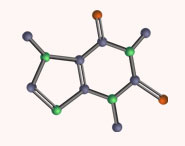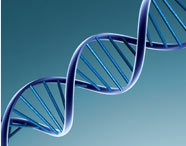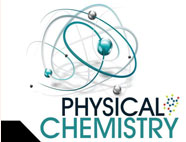


 علم الكيمياء
علم الكيمياء 
 الكيمياء التحليلية
الكيمياء التحليلية 
 الكيمياء الحياتية
الكيمياء الحياتية 
 الكيمياء العضوية
الكيمياء العضوية 
 الكيمياء الفيزيائية
الكيمياء الفيزيائية
 الكيمياء اللاعضوية
الكيمياء اللاعضوية 
 مواضيع اخرى في الكيمياء
مواضيع اخرى في الكيمياء
 الكيمياء الصناعية
الكيمياء الصناعية |
أقرأ أيضاً
التاريخ: 1-10-2019
التاريخ: 2023-07-31
التاريخ: 5-8-2018
التاريخ: 21-11-2019
|
In Chapter 2 you saw how, if given the right amount of energy, electrons can be promoted from a low-energy atomic orbital to a higher energy one and how this gives rise to an atomic absorption spectrum. Exactly the same process can occur with molecular orbitals: energy of the right wavelength can promote an electron from a fi lled orbital (for example the HOMO) to an unfilled one (for example the LUMO), and plotting the absorption of energy against wavelength gives rise to a new type of spectrum called, for obvious reasons which you will see in a moment, a UV–visible spectrum. You have just seen that the energy difference between the HOMO and LUMO for butadiene is less than that for ethene. We would therefore expect butadiene to absorb light of longer wavelength than ethene (the longer the wavelength the lower the energy). This is indeed the case: butadiene absorbs at 215 nm compared to 185 nm for ethene. The conjugation in buta diene means it absorbs light of a longer wavelength than ethene. One of the consequences of conjugation is to lessen the gaps between fi lled and empty orbitals, and so allow absorption of light of a longer wavelength.
●The more conjugated a compound is, the smaller the energy transition between its HOMO and LUMO, and hence the longer the wavelength of light it can absorb. UV–visible spectroscopy can tell us about the conjugation present in a molecule.
Both ethene and butadiene absorb in the UV region of the electromagnetic spectrum. If we extend the conjugation further, the gap between HOMO and LUMO will eventually be small enough to allow the compound to absorb visible light and hence have a colour. Lycopene, the pigment in tomatoes, which we introduced at the start of the chapter, has 11 conjugated double bonds (plus two unconjugated ones). It absorbs blue–green light at about 470 nm: consequently, tomatoes are red. Chlorophyll, in the margin, has a cyclic conjugated system: it absorbs at long wave lengths and is green.



|
|
|
|
مقاومة الأنسولين.. أعراض خفية ومضاعفات خطيرة
|
|
|
|
|
|
|
أمل جديد في علاج ألزهايمر.. اكتشاف إنزيم جديد يساهم في التدهور المعرفي ؟
|
|
|
|
|
|
|
العتبة العباسية المقدسة تنظّم دورةً حول آليّات الذكاء الاصطناعي لملاكاتها
|
|
|